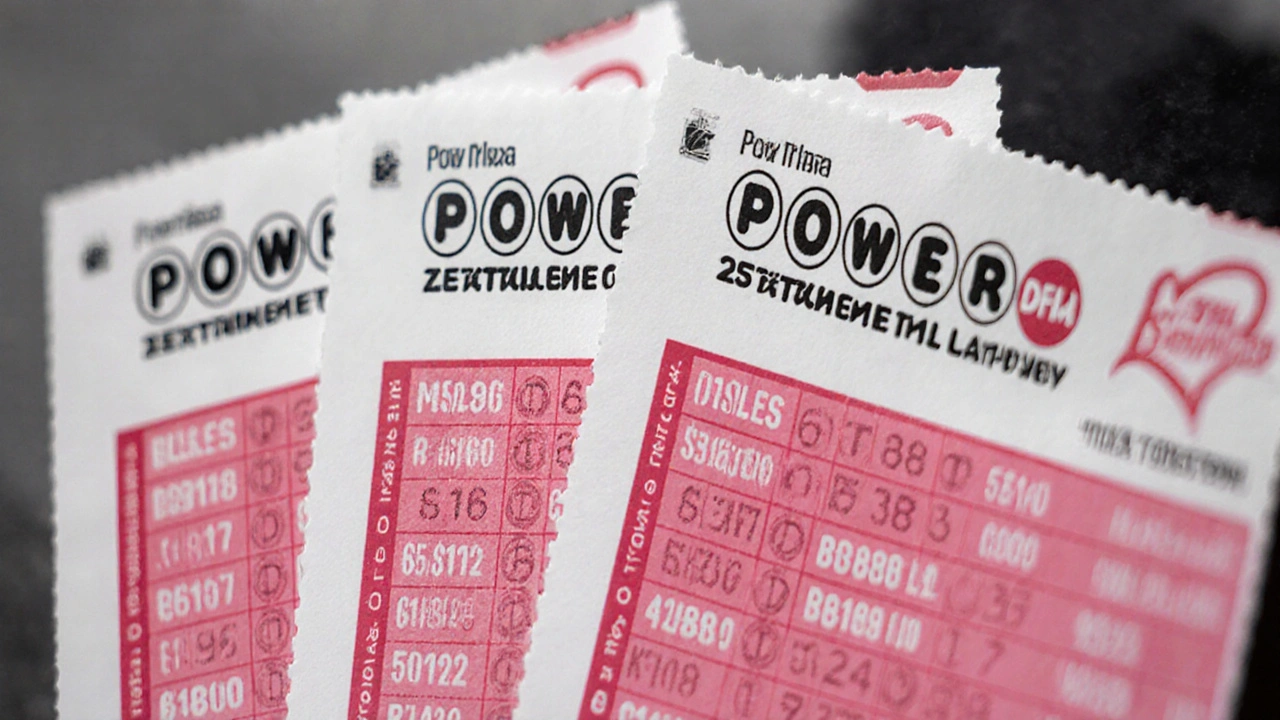Powerball
When you hear Powerball, the U.S. multi‑state lottery that draws five white balls and a red Powerball twice a week. Also known as the Powerball lottery, it offers odds of 1 in 292.2 million and can generate jackpots worth hundreds of millions of dollars. Jackpot, the top prize that grows until a ticket matches all numbers is the headline pull for players, while Odds, the statistical chance of winning each prize tier shape how people plan their numbers. The game requires buying a ticket, picking numbers, and waiting for the live draw – a simple loop that fuels a massive daily conversation.
How Powerball Works and Why It Matters
Powerball encompasses a draw, a ticket, and a prize pool. The draw requires five white balls from 1‑69 and one red Powerball from 1‑26. The Jackpot influences ticket sales; when the prize climbs above $300 million, sales spike dramatically. Meanwhile, the Power Play option multiplies non‑jackpot winnings by up to 10×, giving casual players a bigger payout for a small additional cost. Another add‑on, Double Play, adds a second set of numbers for a separate draw, effectively doubling a player’s chance to win a smaller prize.
These features create a web of relationships: Power Play, a multiplier that boosts lower‑tier prizes enhances the overall appeal, while Double Play, an optional second draw on the same ticket increases the odds of any win without changing the jackpot odds. The draw schedule (Tuesday and Friday evenings) sets a rhythm that keeps players engaged and media coverage steady.
Understanding the Lottery Commission, the organization that runs Powerball and distributes prizes is also key. They handle the pooling of ticket revenue, the funding of the jackpot, and the integrity of the draw. Their transparency reports and audited draws give the game legitimacy, which in turn sustains public trust and participation.
From a practical standpoint, buying a Powerball ticket is straightforward: choose five numbers, add a Powerball, decide on Power Play or Double Play, and submit the ticket at a licensed retailer or online platform. Once the draw happens, you can check results on the official website, through mobile apps, or via local news outlets. If you win, the commission contacts you directly for verification and payout, especially for jackpot winners who often have to claim in person.
Below you’ll find a collection of recent Powerball stories that cover everything from record‑setting jackpots to expert analysis of odds, Power Play trends, and the impact of big wins on ticket sales. Whether you’re a seasoned player tracking the next big draw or a casual fan curious about how the game works, these posts give you the context, data, and insights you need to stay informed about Powerball’s ever‑evolving landscape.




